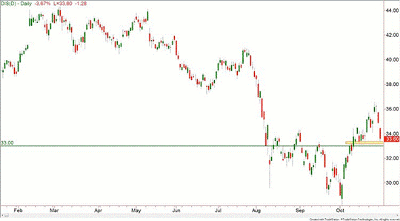A simple put-selling strategy, while a fine income-generating tool for more active traders, can also be easily adapted to allow longer-term investors to purchase desired stocks at a nice discount.
The purpose of this article will be to explain the two different purposes behind selling cash-secured puts.
Writing puts can be done with one of two intents: Purely investing or purely trading. The investor who sells a put truly wants to get assigned the stock at a predetermined price for a discount. The trader wants to sell the puts strictly to obtain the premium from the sale, and not necessarily the stock.
The table above clearly divides the intent of these two by separating the primary from the secondary goals. The main difference between the two is that the first one is more like an investing approach, while the second one is purely trading activity. Make sure to identify your investing/trading style prior to writing puts.
Besides these put-writing approaches (black and white, or investing versus trading), we can also use a third approach, which basically mixes the two. With this approach, the basic assumption is still the same: we truly want to own the stock.
For educational purposes only, Disney (DIS) stock has been selected. The daily chart shows the stock (at the time of writing) losing 3.67% and bouncing off its strong demand zone (DZ) around $33. The last candle's tail has not gone below $33 as of yet; therefore, selling the 33 cash-secured put would make sense.
Looking at DIS with strictly put-writing eyes, one could design a trade in the following way. With Disney trading above $33 and the sale of the (at-the-money or near-the-money) November ATM 33 puts for a credit of $1.10, this would give the seller an obligation to buy the stock at $33 if it is below this level at expiry.
See related: How to Trade Options Expiration
If assigned, the actual cost basis of the stock would be $31.90 ($33 - $1.10). In such case, Figure 3 below shows the goals for the two players. If the trader is assigned the stock, they can then sell calls against it, hold the stock if they are bullish, or simply close the stock position.
Here is what goes through the minds of each of them. The investor likes the stock, but finds the current stock price a bit too high, so he or she sells the put to reduce the price of the entry.
Meanwhile, the trader looks at the chart and does their technical analysis. From this they determine that the stock has a solid level of support at the “33-ish” area and they have the full conviction that this demand zone will hold, so they sell the shortest possible time (November 33 put) for a premium of $1.10.
In conclusion, writing puts is viewed by some as an investing strategy and by others as a trading strategy. You can use it for either or for both. Same strategy…different mindset.
By Josip Causic, instructor, Online Trading Academy















